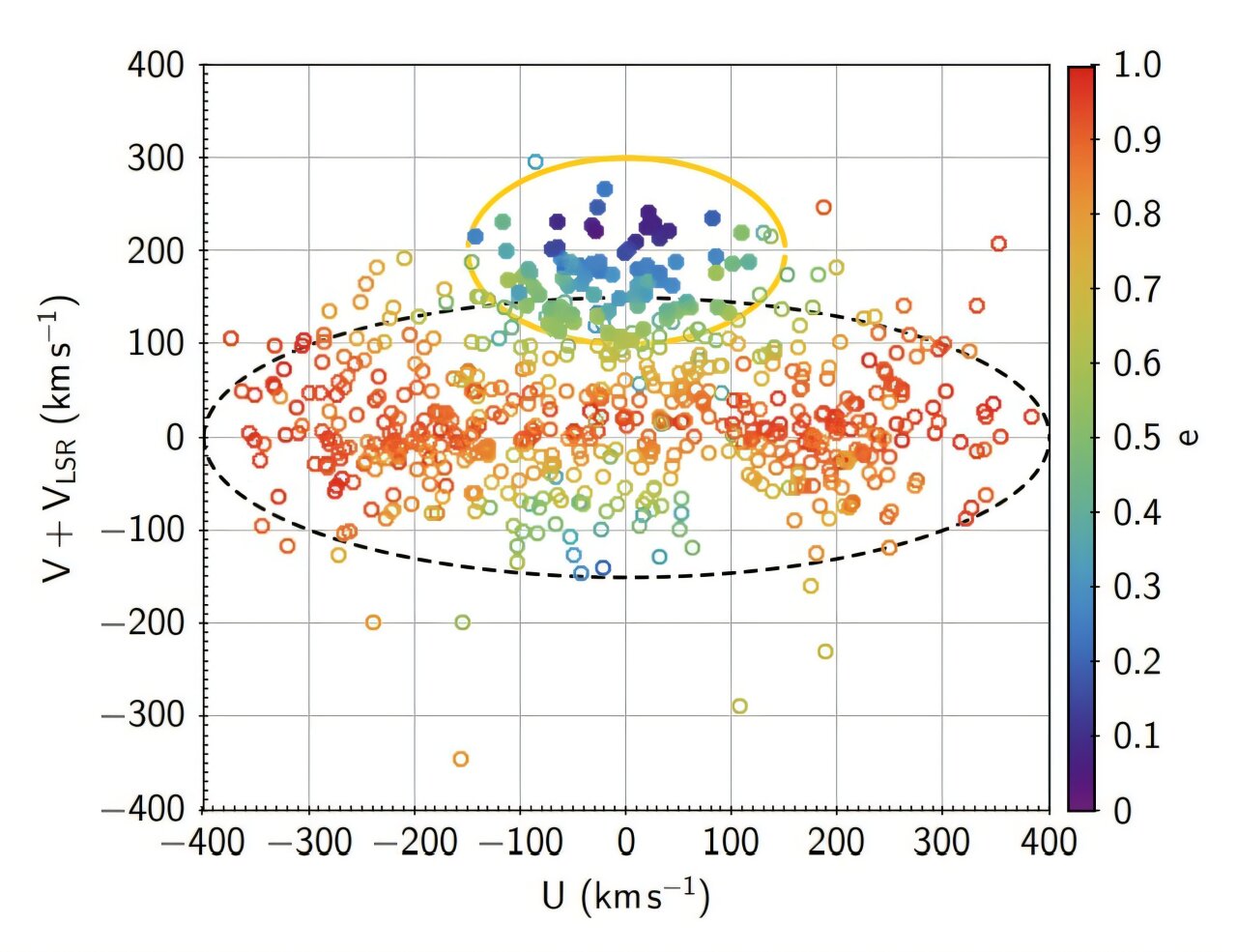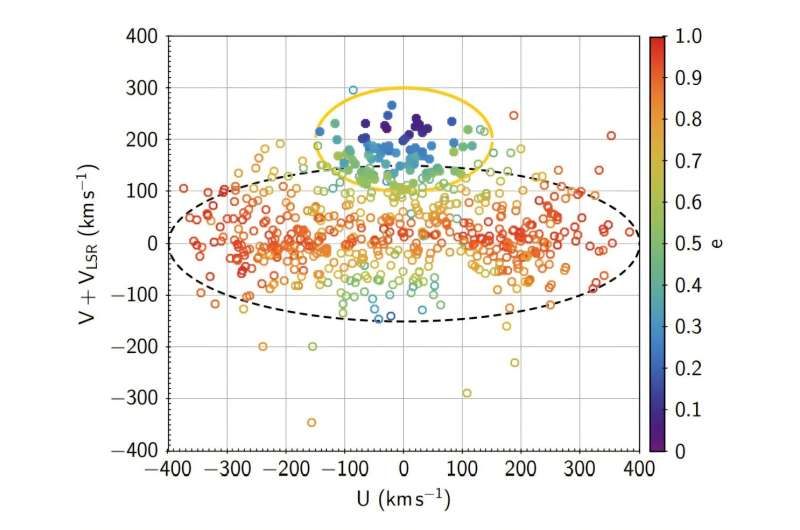

Astronomers from Italy and Chile have investigated an accreted stellar stream named Icarus in the Milky Way’s disk. Results of the study, detailed in a research paper published October 16 on the preprint server arXiv, yield crucial information regarding the nature of this stellar stream.
Icarus is a fast-rotating stellar stream in the Galactic disk, discovered in 2020. It is assumed that this stream is a result of accretion of debris from a dwarf galaxy progenitor with a stellar mass of about one billion solar masses, on an initial prograde low-inclination orbit. However, some studies suggest that Icarus may be a signature of the Milky Way’s disk formation and evolution, rather than a remnant of a disrupted dwarf galaxy.
In order to confirm the origin of Icarus and to get more insights into its properties, a team of astronomers, led by Paola Re Fiorentin of the Observatory of Turin in Italy, has analyzed the data from ESA’s Gaia satellite, the Apache Point Observatory Galactic Evolution Experiment (APOGEE) and the Galactic Archaeology with HERMES (GALAH).
“Here, we exploit the excellent synergy between the Gaia, APOGEE and GALAH, and take advantage of these high-quality data to study chemo-kinematical signatures in the local volume, with particular attention to finding and characterizing accreted material towards the disk,” the researchers explained.
The team identified 81 members of Icarus, and by inspecting these objects, they managed to conduct chemical analysis and obtain dynamical properties of this stellar stream. It was found that Icarus has a velocity at the local standard of rest at a level of 171 km/s and its metallicity is about -1.35 dex.
Based on the color-magnitude diagram of Icarus members, the astronomers found that the stellar stream is at least 12 billion years old. The nominal age of Icarus was estimated to be some 14 billion years.
In general, the chemical analysis found that the stars of Icarus are generally alpha-enhanced with an average alpha elements to iron abundance ratio (red giant branch stars only) of about 0.27. Moreover, Icarus stars turned out to exhibit low nickel to iron abundance ratios when compared to Milky Way stars.
All in all, the researchers concluded that the properties of Icarus are typical for accreted low-mass systems and that the obtained results further support the disrupted galaxy remnant scenario for this stellar stream. However, more detailed studies are required in order to confirm this.
“Yet, at this point, we cannot exclude the possibility of a primordial disk origin. Accurate stellar ages, improved astrometry (from Gaia’s next releases), increased spectra (from, e.g., APOGEE, GALAH, WEAVE, 4MOST surveys), and dedicated spectroscopic follow-up whenever necessary, will confirm new members, thus strengthening the ex situ origin of Icarus as the first prograde satellite galaxy in the disk of the Milky Way,” the scientists wrote.
More information:
Paola Re Fiorentin et al, Icarus revisited: An Ancient, Metal-poor Accreted Stellar Stream in the Disk of the Milky Way, arXiv (2024). DOI: 10.48550/arxiv.2410.12581
Journal information:
arXiv
© 2024 Science X Network
Citation:
Observations explore the nature of stellar stream Icarus (2024, October 22)
retrieved 22 October 2024
from https://phys.org/news/2024-10-explore-nature-stellar-stream-icarus.html
This document is subject to copyright. Apart from any fair dealing for the purpose of private study or research, no
part may be reproduced without the written permission. The content is provided for information purposes only.